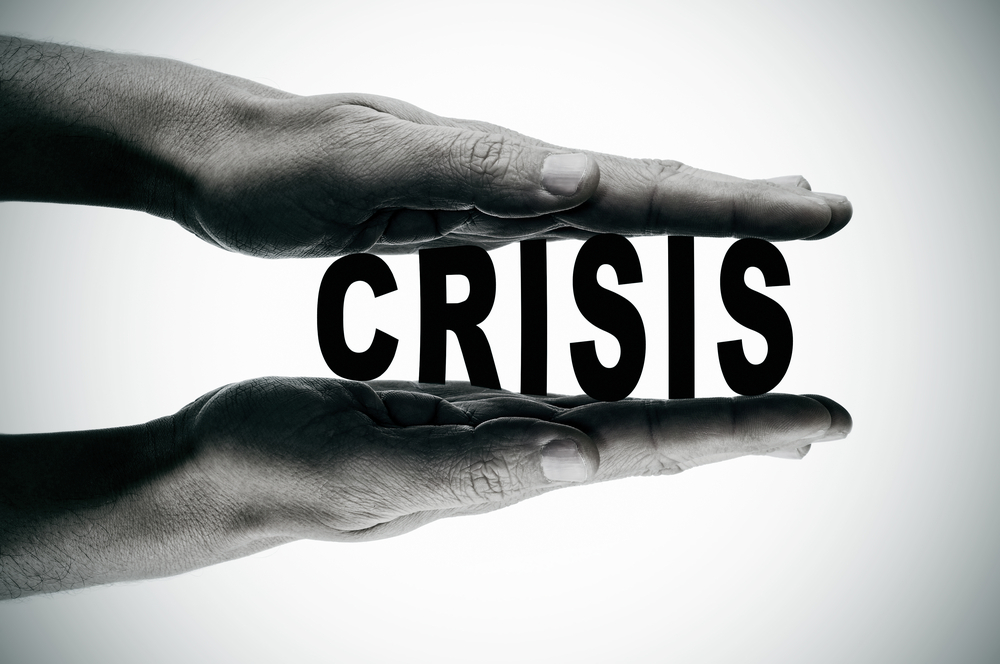 Written by Charles Schubert.
Written by Charles Schubert.
Healthcare professionals face constant pressure to stay competitive as the field evolves. Employers now prioritize candidates with advanced certifications, recognizing their specialized expertise and commitment to professional growth.
Securing these certifications can open doors to leadership roles, higher salaries, and specialized opportunities. However, the process demands a strategic approach to ensure success.
To help you stay ahead, this guide breaks down the essentials for obtaining advanced healthcare certifications. But before that, let’s first explore the benefits that come with these certifications.
Benefits of Advanced Certification
Increased Earning Potential
Advancing your certifications can significantly boost your salary prospects. Employers value specialized skills, often compensating certified professionals with higher pay to reflect their expertise and dedication.
Certifications signal your ability to handle complex responsibilities. Occasionally, organizations adjust compensation packages to retain skilled staff with proven qualifications, creating more financial stability for you over time.
Additionally, healthcare systems increasingly align pay scales with credentials. Whether you’re negotiating a raise or stepping into a new role, advanced certifications strengthen your position during salary discussions.
Access to Specialized Career Opportunities
In addition to better pay, advanced certifications can lead you into niche fields within healthcare. Employers are always looking for candidates with proven expertise when filling specialized roles requiring specific technical knowledge.
You’ll also find that certifications act as gateways to highly focused departments or advanced clinical work. From neonatal care to oncology or even health informatics, the right credentials position you for targeted opportunities in these areas.
Moreover, you’ll be better placed to work for prestigious institutions or organizations that demand higher qualifications. These roles usually come with unique challenges and rewards, setting you apart in your professional journey.
Enhanced Professional Credibility
Certifications also establish you as an authority in your field. Colleagues and employers recognize the effort and expertise required, leading to increased trust in your capabilities.
Healthcare teams rely on professionals with validated knowledge when making critical decisions. Certified individuals are the go-to resources for guidance, further boosting their reputation within organizations.
Such credibility also extends to patient interactions or external collaborations. Patients feel reassured knowing they’re cared for by certified experts, while peers are more likely to involve you in impactful projects or research opportunities that demand specialized skill sets.
Better Job Security in Competitive Markets
Healthcare careers are increasingly competitive. Whatever you think of as stable positions now could quickly become vulnerable during organizational shifts or economic changes.
You can become versatile with certifications that showcase advanced knowledge. Employers prioritize retaining individuals with specialized skills when facing restructuring or downsizing.
Credentials also align with emerging technological advancements and industry trends. From AI integration to telehealth innovations, certifications ensure you’re equipped for modern healthcare demands.
Qualification for Leadership or Management Roles
Experts aiming for leadership positions in the healthcare industry benefit greatly from advanced certifications. These qualifications demonstrate your ability to handle administrative responsibilities alongside clinical expertise.
With specialized training, you develop critical decision-making skills and strategic thinking essential for management roles. Certifications also cover areas like team coordination, compliance oversight, and operational planning.
Most employers view certified candidates as prepared to lead departments or spearhead initiatives. Such roles require trust in your ability to guide teams effectively and maintain high standards of care.
Networking Opportunities
Advanced certifications open up valuable networking avenues. Fellow candidates and alumni regularly connect through professional groups or online forums, creating a supportive community.
These networks are rich resources for job leads, industry insights, and collaborative projects. Engaging with this group keeps you informed about emerging trends and best practices in your specialty.
Moreover, conferences or workshops tied to certifications provide face-to-face interactions with leaders in the field. You’ll get to expand your contacts and possibly gain mentorship from seasoned experts.
Essential Steps and Resources for Obtaining Advanced Healthcare Certifications
Identify Your Career Goals
Before embarking on the certification journey, outline where you want your career to go. Certifications vary widely, and choosing one aligned with your long-term ambitions ensures you invest time and resources wisely.
Specific goals clarify which credentials suit your desired specialization or leadership aspirations. For instance, if you aim to transition into healthcare IT or management, certifications like Health Informatics or Healthcare Management align directly with those paths.
Your current role can also guide this decision. Ideally, think about how an advanced credential could enhance the work you already do while preparing you for broader opportunities in related fields or industries.
Research the Right Certification Programs
You don’t want to invest in certifications that fail to match your career path. Exploring accredited programs tailored to your field ensures you make informed decisions. Reliable organizations like ANCC or HIMSS offer widely respected options.
Program details could include eligibility, exam structure, and recognized outcomes. Ideally, focus on certifications endorsed by professional boards or healthcare institutions within your specialization.
Colleagues and mentors can also provide insights about their certification experiences. Speaking with them may reveal industry-specific recommendations or overlooked options that align better with your goals.
Evaluate Time and Financial Commitment
Healthcare certifications demand significant time and money. Understanding these commitments early helps you plan effectively without unnecessary stress or burnout.
Some certifications require months of study, alongside exam fees, application costs, and potential recertification expenses. Balancing this with your work schedule may involve creating a structured timeline.
Financial assistance is also worth exploring. Employers occasionally offer reimbursement programs for career development efforts, while scholarships from professional organizations can significantly reduce upfront costs.
Utilize Practice Exams
Exams are an inevitable step in earning certifications, and preparation is key. Practice exams offer a clear view of the test structure and highlight areas where you may need improvement.
Resources like Knowt provide excellent tools for structured studying. Though known for IB exam study guides, their approach to creating interactive review materials applies well to healthcare certification prep.
Consistency in using practice exams can also boost retention. So, regularly test your knowledge to ensure that concepts stick while improving confidence as the exam date approaches.
Leverage Technology for Learning
Modern technology simplifies certification prep by offering tailored tools. Mobile apps, like Quizlet or Nursing.com, deliver on-the-go learning options perfect for fitting study sessions into your busy schedule.
Virtual reality (VR) and simulation platforms take it a step further. Some healthcare certifications incorporate practical scenarios through VR simulations, allowing you to apply theoretical knowledge interactively.
AI-powered programs analyze your progress and recommend focused topics for review. These features save time by eliminating unnecessary repetition while keeping you on track with clear goals.
Seek Mentorship from Certified Professionals
Mentors who have already earned advanced certifications can provide invaluable guidance. Their experiences could reveal practical strategies for exam preparation and career advancement you won’t find in study materials.
Certified professionals can share insights on balancing work, study time, and life responsibilities during the certification process. They may also recommend resources or offer tips on avoiding common pitfalls.
Building these connections expands your professional network as well. Some mentors might introduce you to opportunities, whether through employer-sponsored programs or industry events, helping you move closer to achieving both certification and career goals efficiently.
Leverage Online Learning Platforms
We no longer live in a time when certification prep requires physical attendance. Online learning platforms now offer flexible options tailored to busy healthcare professionals. You can find courses, mock exams, and video tutorials covering various certifications.
Many of these platforms, such as Coursera or MedBridge, provide modules specifically designed for advanced credentials. This allows you to learn at your own pace while balancing work and other responsibilities.
Some even include peer discussion boards where you can connect with others pursuing the same certifications. Engaging in shared discussions helps reinforce knowledge while offering support during challenging preparation phases.
Apply for Certification Exams
After completing the preparation, the next step is to secure your exam date. Many organizations require early registration due to limited seating or specific deadlines tied to testing cycles.
When applying for certification exams, ensure all required documents, such as proof of eligibility or work experience, are submitted correctly to avoid delays. Missing details could cost you a valuable testing window.
Moreover, carefully review exam fees and available locations. Some certifications offer remote testing options, which can save time and reduce stress on the exam day.
At AIHCP there is no cumulative final exam or certification exam. We conduct all testing via a series of CE courses. When it is time to apply for certification, at AIHCP, all that is left filling out an application form and a paying the certification fee. Please view our certification process for more details.
Maintain and Renew Certifications
Certifications aren’t permanent. Many need renewal every few years to ensure you stay up to date with the latest industry standards and practices. Tracking expiration dates early prevents last-minute scrambles.
Renewal often involves completing continuing education credits or passing refresher exams. Online platforms, like CEUFast, simplify this procedure by offering accredited courses tailored to certification requirements.
Some professional organizations provide membership perks, including discounts on renewal fees or exclusive access to necessary resources. You can take advantage of these benefits to make the renewal more manageable.
For example, AIHCP’s certifications are valid for four years and after which time they can be renewed by completing 50 CE hours worth of continuing education and paying a recertification fee. Please visit our recertification programs for more details.
Final Thoughts
Staying competitive in the ever-evolving healthcare sector requires dedication and foresight. Advanced certifications are stepping stones to professional and personal growth.
So, seize this opportunity to develop your skills, open doors to specialized roles, and secure a future-proof career. Whether through mentorship or cutting-edge technology, you have myriad resources at your fingertips.
Writer’s Bio
Charles Schubert is a dedicated healthcare writer and industry expert, focusing on professional development within the medical field. With extensive experience in exploring career growth strategies, he helps professionals navigate advanced certifications to enhance their skills and opportunities.
His insightful articles combine practical advice with current trends, empowering readers to thrive in an increasingly competitive environment. Charles is passionate about equipping others for success in their careers.
Please also review AIHCP’s Certification programs and see if it meets your academic and professional goals. These programs are online and independent study and open to qualified professionals seeking a four year certification

 Written by Phillip Ekuwem.
Written by Phillip Ekuwem. Written by Nick Gabriele.
Written by Nick Gabriele. By Alan Dworetsky.
By Alan Dworetsky. Written by Jeremy Carter
Written by Jeremy Carter
 Written by Charles Schubert
Written by Charles Schubert Written by Veronica Turner.
Written by Veronica Turner. Written by Mark San Juan.
Written by Mark San Juan.